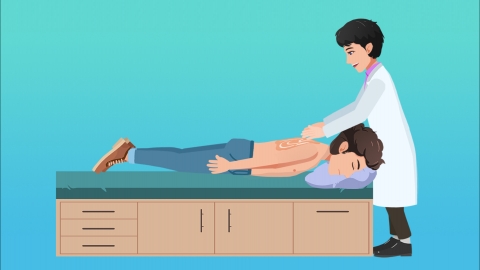What are the methods of massage and manipulation?
Generally, common massage techniques include linear pushing, circular pushing, divergent pushing, friction, and kneading. The details are as follows:

1. Linear Pushing Technique
In the linear pushing technique, the fleshy part of the thumb or the index or middle finger is moved in a single straight direction along the skin. This method is commonly used for operating on linear acupoints, such as opening the heavenly gate (Kai Tian Men) and clearing the heavenly river water (Qing Tian He Shui), and it helps to relieve blockages and disperse nodules. During the operation, the applied part should closely adhere to the skin, with moderate pressure, even speed, and gentle yet effective force.
2. Circular Pushing Technique
The circular pushing technique involves rotating the thumb's fleshy part clockwise on acupoints. This method is often used on the spiral surfaces of fingers, such as for spleen channel tonification (Bu Pi Jing) and kidney channel tonification (Bu Shen Jing), and it helps harmonize the internal organs. During the operation, the rhythm should be light and brisk, with even rotation, aiming to create a comfortable sensation.
3. Divergent Pushing Technique
In the divergent pushing technique, the thumbs are placed on specific acupoints and then pushed outward in opposite directions. The force and positioning must be symmetrical, and the speed should be consistent. This technique is commonly used on areas such as the Kan Palace (across the forehead), chest, abdomen, and back, and it helps balance yin and yang and promote the circulation of qi and blood. During the operation, both hands should work in coordination, applying moderate force to avoid excessive pressure that may cause injury.
4. Friction Technique
In the friction technique, the palm, thenar eminence, or heel of the hand is gently placed on the skin and moved slowly and softly in circular motions. This technique uses light pressure without affecting deeper tissues. It is commonly applied to the chest, abdomen, ribs, and other areas, helping to relieve chest tightness, regulate qi, and harmonize gastrointestinal function, as well as aid sleep.
5. Kneading Technique
The kneading technique involves using the fleshy part of the thumb or middle finger, or the thenar eminence or palm heel, fixed on a specific acupoint and then moved in a circular motion. This technique can cause the deeper layers of skin tissue to rotate and is applicable to various parts of the body, such as the Zhongwan (CV12), back shu points, and navel (umbilicus).
Physical energy is consumed during massage, so it is advisable to replenish fluids and electrolytes appropriately after the session.







